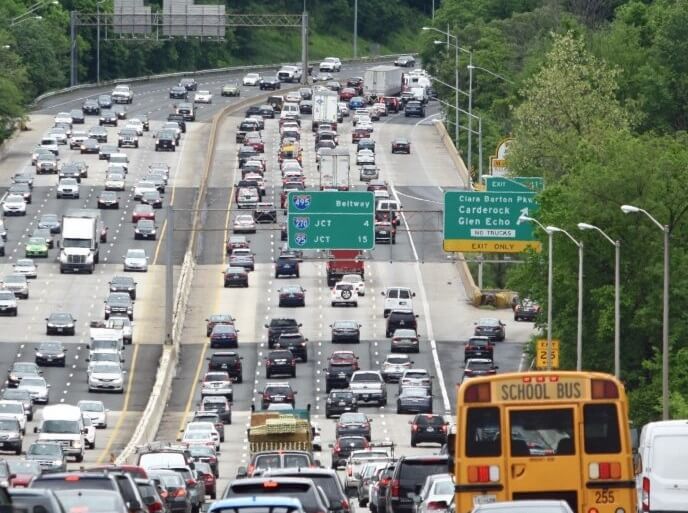
By Rodolfo Perez
The writer is a licensed professional engineer who served over two decades as Engineer Advisor to the Inspector General, U.S. Department of Transportation, and served pro bono in the Montgomery County Transportation Policy Task Force.
On Aug. 25, the Maryland State Highway Administration (SHA) announced the federal approval of the Toll Lanes Project for the Capital Beltway and Interstate 270, and stated that experts at the U.S. Department of Transportation found baseless the allegations of possible fraud in the traffic modeling calculations for the project. A close look at the federal approval documents, including what the experts found, tells a different story, however.
Only a memo to file, written by the Maryland Division of the Federal Highway Administration, claims that the experts did not find fraud in the toll lanes traffic model. None of the findings reported by the experts support that claim. The experts, who operate separately at the USDOT Volpe Center, did not draw any conclusions on the allegation against the integrity of the traffic calculations.
What the experts found is that they “could not assess the plausibility or the validity” of the adjustments that the state officials made in the traffic calculations. State officials made these adjustments in response to the many discrepancies and anomalies discovered in the traffic model results during the public review of the draft and final studies for the project.
Further, the experts found that it was unclear how the traffic results favoring the preferred toll lanes alternative were obtained, and suggested that whatever process generated the results in the draft traffic analysis, it was not revised as part of the final analysis. This finding raises the logical question of whether the discrepancies and anomalies discovered in the draft phase were rectified going into the final phase.
Further, the experts noted that the SHA should address two major points raised about the integrity the traffic modeling calculations. One point, for example, noted the unlikely reductions in travel time during the evening rush-hour (from the draft to the final analysis) for the eastbound Beltway traffic towards the I-95 junction, without a corresponding reduction in the traffic volumes on the ramp exiting to I-95. The evening rush-hour volumes for that ramp remained unchanged in the draft and final analysis.
The cursory response that SHA issued shortly after did not address that point. The SHA attributes the improved eastbound Beltway travel to reductions in the traffic volumes around the Greenbelt Metro Interchange area. According to the SHA, these reductions were made in the final analysis to better reflect the regional predictions for that area, which is located 2.5 miles east of the I-95 junction. The SHA contends that such adjustment eliminated the congestion around the Greenbelt Metro area from spilling into the Beltway, thereby making the Beltway eastbound traffic more fluid.
A close examination of the traffic volumes entering and exiting the Greenbelt Metro area contradicts the SHA response. Without the toll lanes, the volumes are identical for the draft and final analyses, and with the toll lanes, the volumes increased for the final analysis. Numbers at the Beltway corridor level also contradict what the SHA says. For example, the average daily traffic numbers for the I-95 to U.S. 50 segment (east of I-95) are identical for the draft and final analysis.
It is indefensible to proceed any further with a $5 billion investment without first addressing all the credible questions raised about the transparency of the traffic modeling used to justify this project.




 Creative Commons Attribution
Creative Commons Attribution